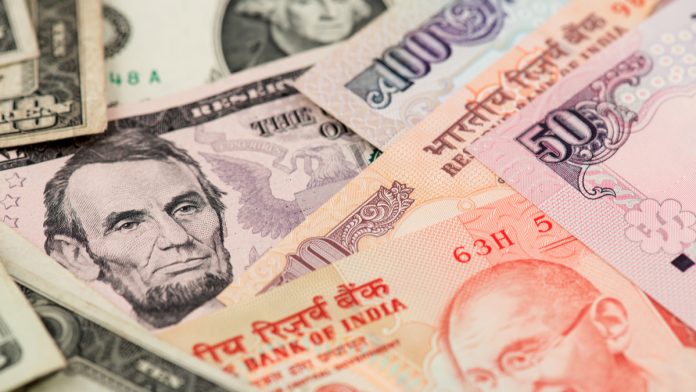- Indian Rupee (INR) trends lower for 5th consecutive session
- Moody’s forecasts -8.9% GDP in 2020 vs -9.6% forecast 2 months earlier
- US Dollar (USD) trends lower versus major peers as covid numbers surge
- US inflation & jobless claims in focus
The US Dollar Indian Rupee (USD/INR) exchange rate is edging higher on Thursday, extending gains for a fifth straight session. The pair settled higher on Wednesday +0.2% at 74.43. At 12:15 USD/INR trades +0.25% at 74.62.
Rating Agency Moody’s Investors Services reported that it forecasts the Indian economy will shrink by 8.9% in 2020 due to the covid pandemic hit to the economy. This as a slight improvement on the 9.6% contraction forecast just in September.
The upward revision from Moody’s comes as covid cases in India slows and as economic activity in the country picks up following a record breaking -23.9% contraction in the April – June period amid one of the world’s strictest lockdowns.
Separately investment bank Goldman Sachs upgraded India to “overweight” owing to its encouraging economic recovery.
The improving outlooks come after the Indian government this week announced a fresh round of stimulus to the tune of $20 billion to help boost the economy out of its record-breaking contraction.
The US Dollar is advancing versus the Indian Rupee although it is slipping lower versus its major peers. The US Dollar Index, which measures the value of the greenback versus a basket of currencies, is trading -0.2%.
Covid cases in the US are surging higher, as the third wave shows no signs of easing up. New daily cases have topped 130,000 and hospitalisations are at a record high of 62,000. New York has seen tighter restrictions applied to stem the spread of the virus.
Analysts are expecting the number of Americans signing up for unemployment benefits to fall only slightly from the previous week to 735,000, down from 751,000.
Consumer prices are expected to have risen 0.2% month on month in October. Annually CPI is expected to increase 1.3% whilst core inflation which excludes more volatile items such as food and fuel is expected to increase 1.8%.





